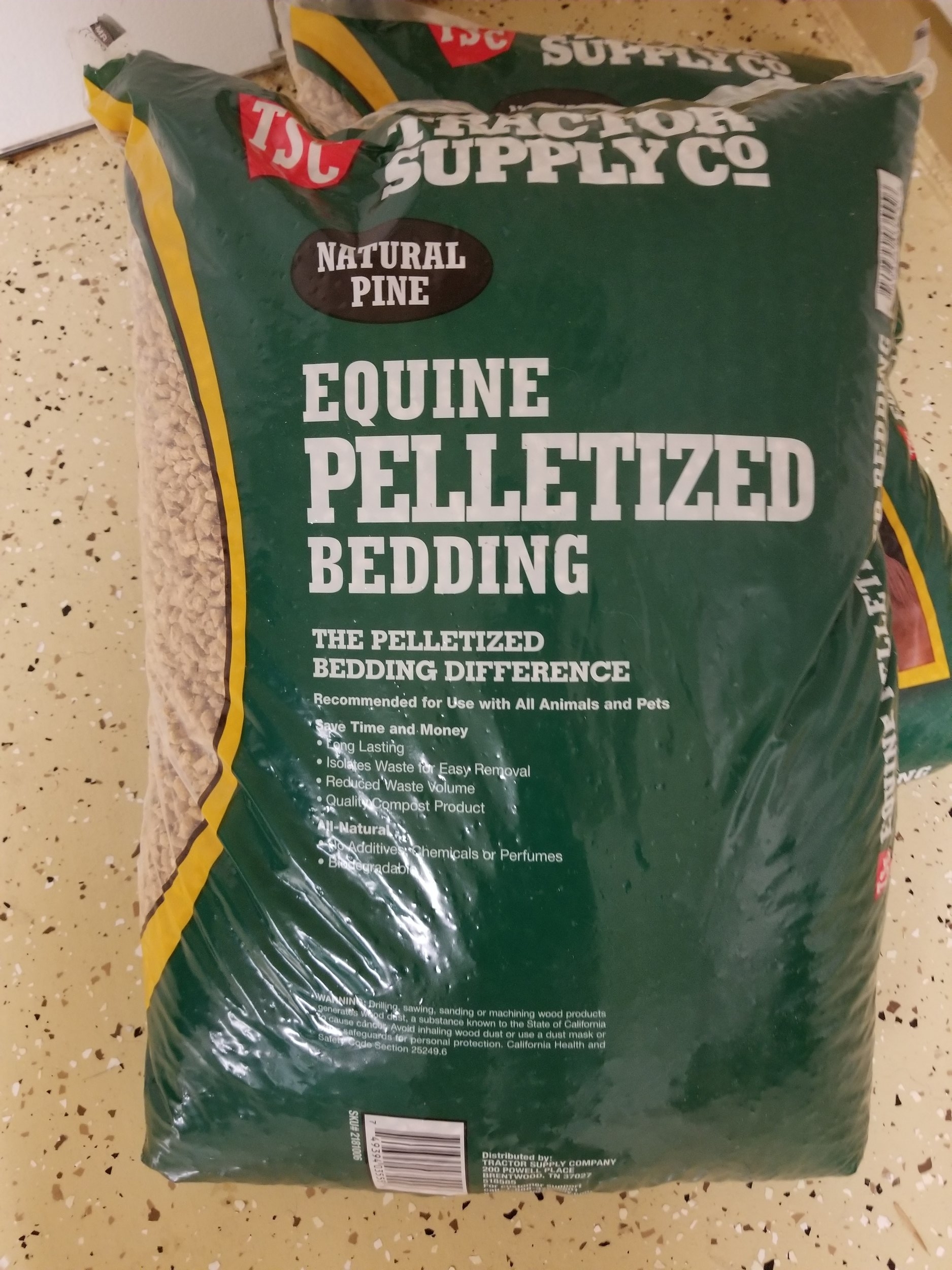Dealing with Bunny Pee
When we got our first bunny, I was not prepared for the whole concept of bunny urine. I had this crazy idea that it was relatively inoffensive. How could anything offensive come out of something so cute? No one warned me that:
* It has a potent ammonia smell
* It contains minerals that build up on surfaces with the ferocity of a plastic coating
* One bunny can produce A LOT of it
Since I like my surroundings really clean, and that extended to my rabbitry, I now had a problem. Let's just say that I'm not the type of person that "gets used to" smells. Instead, I become hypersensitive. I'm sure it's a result of allergies, but one whiff and I swear, the vibrational signature of the molecules is imprinted on my memory and I can't shake it for hours on end - good or bad. When people who wash their clothes in Tide visit us, they leave, and I can smell it until the next day. At least that's pleasant. Bunny pee is not, and the smell memory lasts for hours. What follows is your best defense against potent bunny pee, and the best techniques I've found thus far......
1. Pine Pellets. Follow the farmers or the equestrians to the local feed store and get yourself a bag of pine pellets. Pine pellets are shavings compressed into a tiny pellet shape. They absorb A LOT of pee, and the faint natural pine smell helps negate odors. They also produce much less dust than shavings - a plus for those with allergies.
I add a layer of pine pellets to the bottom of litter pans. They do a great job of soaking up pee and prevent dripping and mess when it's time to clean. I add them to the collection bins that sit a foot underneath my cages. These help absorb the mess of everything that lands outside the litter box. Important to note: avoid using these in situations that would require your bunny to walk, stand, lay, etc directly on the pellets.
2. What about the coating effect? So, when bunny pee sits on plastic for extended periods of time, some of the minerals in the pee harden and stick to the plastic like a layer of cement - bunny cement. If you have a power washer, you can get a lot of it off. If you have 12-24 hours, you can soak the plastic in white vinegar. This may dissolve or loosen the minerals. But neither of these solutions work well if the plastic is scraped or worn down. For that, try Mediterranean Gold Cat Litter/Odor Eliminator. It's not cheap - they call it gold for a reason.
I'm really not sure how or why this works. What I do know, is that it somehow loosens bunny cement, turning it into a sludge that can be wiped or scraped off. Here's the trick. Add a thin layer of this to the bottom of the litter box or area with bunny cement. Top with a decent layer of pine pellets. When your bunny pees, the pine pellets absorb the majority of the liquid, but hold some moisture NEXT TO the Mediterranean gold - which helps to neutralize the smell and seems to break down the bunny cement. It will take repeated and consistent use, but it has worked for me.
3. There are a lot of scent neutralizing products out there. Most of the ones that I have tried yield minimal success. I don't like the ones that add a scent either. Those typically give me a headache, and I'm pretty sure my bunnies don't like them either. One that does work is Zorbx. It is natural, unscented and safe for your pet. If you don't have time to clean, consider spraying this on top of the litter. It will take away the smell, which is no small miracle, and buy you some extra time. However, it won't take away the cement.
4. If you want things to not smell or become coated at all, you will need to clean daily. And, the only guaranteed way to prevent smell is to prevent bunny pee from touching a surface. In other words, you have to to use something disposable. The answer? Painters plastic. I cut pieces of plastic to line my collection bins and provide a barrier. I can extend the life of the plastic by adding things like bedding, newspaper or pine pellets on top of it - anything that can be partially removed and replaced with new layers. When I can no longer eliminate the smell by adding more pine pellets, I just scoop up the plastic, and replace it with a new piece. Meanwhile, my bins stay dry and clean and virtually like new. It's like starting with a new bin every week.
5. Thus far, we have only addressed solutions for bunny pee once it has left the body. It's even more helpful if we deal with things ahead of time. Feeding your bunny the right diet can make a huge difference. Proteins from soy and grain are not easily processed by the lagamorph body, so they are eliminated via urine. What does protein in urine smell like? Ammonia. If you feed your bunny a diet that is high in proteins from grasses and hay that can be easily processed, less protein is eliminated. It doesn't seem like this would make a huge difference, but it does. So, more hay/grass and more clean water.
We hope these tips will help you find that magic combination that keeps your house or bunny area smelling fresh and clean!





